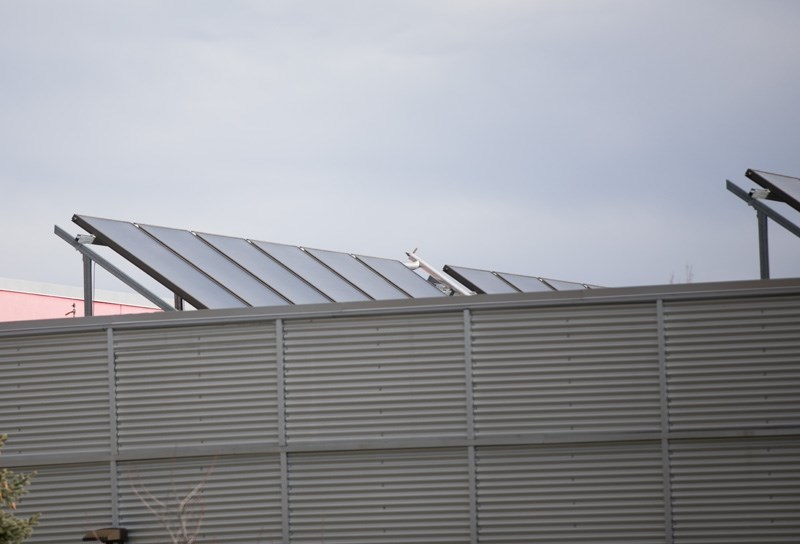There won’t be solar power at the Okotoks Recreation Centre in the near future.
A study conducted by Ozz Solar Development Inc. revealed the return on investment for the Town was not worth the cost of installing solar panels on the roof of the rec centre.
Stefan Martensson, Okotoks interim environment and sustainability co-ordinator, said the Town was hoping ton install a 500-megawatt array on the roof, but the electrical system at the Okotoks Recreation Centre would limit the system to 300 megawatts.
“But even if we’re limited to 300 megawatts, there wouldn’t be a feasible way of paying for it in this market,” said Martensson. “Panels are coming down in price but they’re still pretty expensive. Right now we’re in a recession so we don’t want to spend money everywhere.”
Chris Buligan, vice-president of operation for Ozz Solar Development Inc., told council in a telephone conference during its Oct. 24 meeting the feasibility study had included running a number of financial models and at the current electricity rate, even the provincial grant wouldn’t make a solar array viable for the Town of Okotoks.
“Our recommendation was to wait and see what future steps would be taken by the provincial government to incentivize solar and make it a worthy investment for the Town,” said Buligan.
Martensson said in years to come, when the cost of solar panels comes down and the price of electricity rises, it would make more sense to invest in an array – but not likely on rec centre roof.
Solar arrays have a lifespan of 25 years, so the Town would want to ensure it was installing them onto a roof that would last as long, he said. It would be costly to remove the hardware from the roof for repairs, he said.
“We’re thinking we should put it on the Pason instead because it’s a south-facing roof with a pitch and it’s brand new,” said Martensson.
The issue is it’s unknown whether the $135,000 provincial grant the Town has been pre-approved for would still be available by the time the roof went on the Pason Centennial Arena expansion, he said. To prepare, the electrical gear and roof construction have been adjusted for the future accommodation of a solar array, he said.
“It’s a lot cheaper to do it now in the construction phase than retrofitting later on,” said Martensson. “We’re trying to be as frugal as possible but still be in the forefront of our development.”




